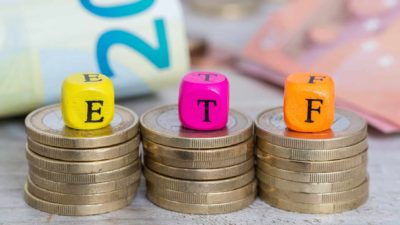Ben Miller, portfolio manager from Naos Asset Management, has outlined three principles when looking at smaller companies when targeting sustainable and growing dividends over time.
Naos has three investment listed investment companies (LICs) that are looking at smaller and microcap ASX shares, including Naos Emerging Opportunities Company Ltd (ASX: NCC) and NAOS Ex-50 Opportunities Company Ltd (ASX: NAC).
These are three principles that Mr Miller talked about:
Free cashflow
The first point was that the ability of a company to compound capital comes down to how a company utilises or re-invests a portion of its free cashflow. That could be acquisitions, re-investing into new operations, starting new divisions, reducing debt or building a bigger cash pile for the future.
A business that is paying out cash at the expense of growth of the business isn't helping the long-term quality of that company.
Naos said that it likes to see capital-light businesses allocate some free cashflow to strategic and balance sheet initiatives as well as paying a dividend.
Mr Miller said that that a company that is generating sustainable income for investors should generally have a higher free cashflow than dividends.
Payout ratio
ASX listed companies have quite high dividend payout ratios compared to international shares – ASX payout ratios have been rising over the longer-term and play a factor in total shareholder returns according to Naos.
Mr Miller said that whilst there are company or industry specific, or even ownership specific, factors that may vary results, a general principle is that a very high dividend payout ratio can mean that dividends might not be sustainable over the longer-term.
When a business retains some profit, that can be a risk mitigation factor in the future if there's something like a recession.
He also pointed out that a high dividend payout ratio may mean that businesses aren't re-investing enough to stay ahead of the competition.
Mr Miller made the following comments about insights regarding boards:
A payout ratio can also provide investors with an insight into the intentions of the Board of directors. A very high payout ratio may highlight elements of a short-term focus and/or a volatile dividend profile may highlight elements of a lack of visibility around the long-term strategy of the business. As a general rule of thumb, the market doesn't look favourably on cuts in dividends amounts without appropriate justification.
In our opinion, a capable Board is one which prudently builds the retained earnings balance at a rate greater than the dividend payments but is equally able to pay a steadily growing stream of dividends over the long term. By doing so, you are giving yourself a buffer in case of unexpected losses/impairments and are able to demonstrate good level of capital management competency upon which shareholders can depend.
Financing cashflows
Mr Miller also pointed to the fact that the cashflow statement should be the first thing that investors look at because it's harder to "muddy the water".
Naos pays particularly close attention to the financing cashflow section of the balance sheet.
The investment manager doesn't like to see to businesses are regularly borrowing money without paying it back.
Sometimes a business can need to use borrowings for acquisitions or funding working capital. But a company that is living on debt and not generating free cashflow can lead to dividend cuts and a possible capital raising.
On this point, Mr Miller said:
A quick way to interpret the sustainability of the funding of dividends would be to compare dividend growth to debt growth. Artificially 'holding up' a dividend through debt is likely not a sustainable capital management decision.
Final thoughts
Mr Miller pointed out that avoiding yield traps is just as important as finding a good sustainable dividend.
He said that the compounding financial growth for a successful small company can translate into substantial dividend growth over time.









